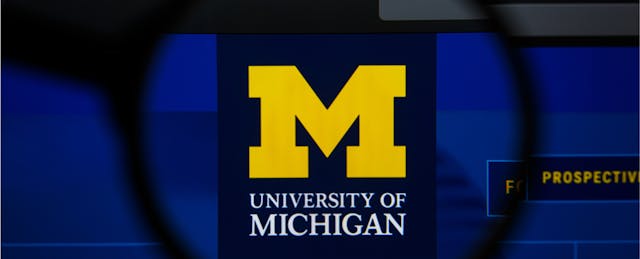The office of academic innovation at the University of Michigan is staffing up in anticipation of a new initiative and a new investment to be announced this fall.
The department is hiring for more than a dozen new designer, developer and strategy jobs, including for an associate director for media technology and innovation. Over the next few years, the department plans to hire about 40 people in all, making it about 100 strong, says James DeVaney, associate vice provost for academic innovation.
DeVaney wouldn’t reveal much about the innovation team’s particular plans, other than to say that the university intends to offer three new online and hybrid degree programs in the fall and to launch multiple degrees per year over the next five years.
“We’ve had a lot of success in the open-learning space, driving a fair amount of this growth,” he says. “We’ve developed this set of teams that creates exemplary online-learning environments and experiences. In parallel, we’ve developed a team that builds tools that enhance the residential learning environment. In the next stage of growth, we’re looking to challenge any misconceptions of the use of personalized learning at that scale.”
Few other university “innovation” teams match the size of that at Michigan, says Michael Feldstein, chief accountability officer at e-Literate: “Obviously it signals a lot of ambition and maybe more of an emphasis on scale and on software development than you typically see at other institutions using that label.”
The University of Michigan office of academic innovation opened more than five years ago to serve as an in-house technology incubator, consulting firm and design lab. Staff members work with student fellows and faculty to design curricula, dive into education data and develop personalized-learning tools.
The university has been making free online classes known as MOOCs, or massive open online courses, since the medium’s early days, says Dhawal Shah, founder of Class Central, which ranks the institution as the fourth-most prolific university MOOC producer. Last year one of its courses ranked fifth in total enrollments of all MOOCs offered on Coursera, a MOOC platform.
About 80 percent of the university’s on-campus students use tools the team has developed, either because professors have incorporated them into their classes or because peers recommend them as useful resources, DeVaney says. These include Problem Roulette, which offers users random-within-a-topic study problems pulled from old exams, and GradeCraft, a learning management system that helps instructors build game elements into their courses.
Having an in-house innovation team allows the university to draw on the expertise of faculty residents and student fellows when designing tools intended for their use.
“When we create these tools ourselves, it allows us to create the data flows that allow us to continually evaluate their influence on learning,” DeVaney says. “We develop a more agile and iterative model for our constituents on campus.”
That’s appealing to other colleges, too, more than 100 of which have licensed software developed at the University of Michigan, DeVaney says: “Other institutions want to adopt these tools because they’ve been built with the input of primary users.”
While building tools on campus has attracted research grants, generating revenue is not the primary function of the innovation team.
“When there is an opportunity to help bring in some revenue to offset the cost, that’s a nice perk,” DeVaney says. “Mostly, we support research, teaching and learning.”
Correction: This article originally misstated the title of Michael Feldstein. He is chief accountability officer at e-Literate.


